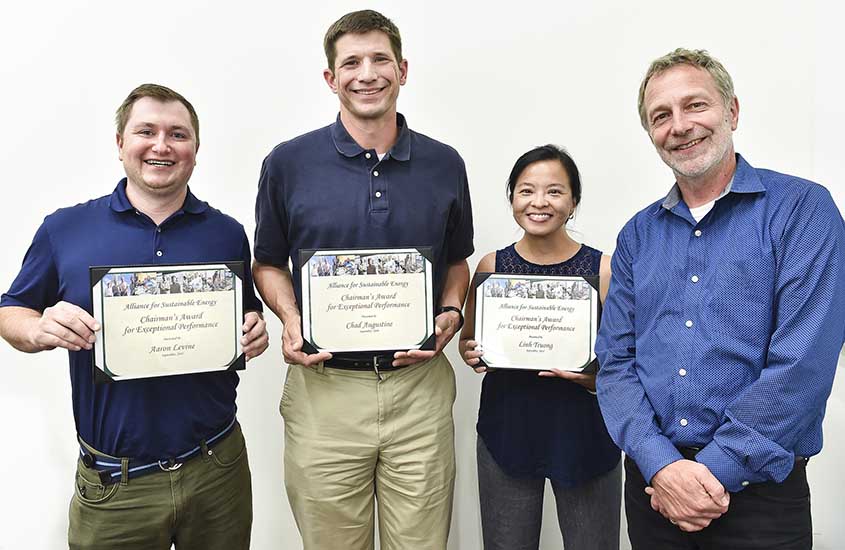Beneath the Surface: A Champion of Renewable Energy

“And one more thing!”
That is how a young Aaron Levine often ended his point-by-point arguments for a new toy, a later bedtime, or a different dinner. His parents knew their child would end up in law or policy—anything that required an expert level of debate.
They were right. Now a senior legal and regulatory analyst at the National Renewable Energy Laboratory (NREL), Levine negotiates far more complex—and altruistic—arguments than a pitch for a shiny new toy. With his two law degrees in environmental and natural resources law and policy, Levine focuses his point-by-point analyses on the regulatory barriers that could slow the growth of renewable energy—including hydropower facilities, geothermal systems, solar panels, and wind turbines.

“Both environmental regulations and hydropower can help protect the planet. So, what’s the right balance between protection and development?” Levine said in an article showcasing one of his recent reports, An Examination of the Hydropower Licensing and Federal Authorization Process. The report examined factors that can increase the time, cost, and risk to license a hydropower project. Such insights can help decision-makers identify potential ways to reform and modernize this process to make sure these facilities can pump out clean energy while adhering to critical protections—a win-win.
If this delicate balancing sounds like a job for a politician or a philosopher—you are right. As an undergraduate at the University of Kansas, Levine double majored in political science and philosophy; after graduating, he briefly worked as an intern and staffer for a U.S. congressman. Throughout these experiences, an undergraduate class on environmental ethics stuck with him, nudging him toward a career path where he could be “a steward and protector of the environment,” Levine said.
Then, in law school, a course on energy and the environment shoved him the rest of the way into renewable energy. “I began to focus on the nexus between energy extraction, production, and environmental impacts,” Levine said. “Energy development impacts many areas—from the subsurface to biological and cultural resources on the surface to our air and water.”
That, plus the rising threat of climate change, landed Levine at NREL, which he calls “a perfect fit.”
While other NREL researchers work to break down the technological barriers that could slow renewable energy implementation, Levine does the same for regulatory and policy barriers. In addition to his recent study on hydropower licensing, he also helped develop an online tool, called the Regulatory and Permitting Information Desktop (or RAPID) Toolkit to guide renewable energy developers through the complex web of federal and state regulations to secure project approval. More recently, Levine published a report detailing opportunities for a mutually beneficial partnership between mining operations and the geothermal energy industry. Mining operations unearth—literally—valuable data on potential geothermal resources and could themselves rely on low-carbon geothermal energy to decrease their carbon footprint and operational costs, too. It is another win-win.

Now, Levine is analyzing another potential happy collaboration: floating solar panels on hydropower reservoirs. And he has been tapped to fill a critical leadership role, working with the U.S. Department of Energy’s Water Power Technologies Office to develop a program to administer funds appropriated under the Bipartisan Infrastructure Law, including investments to update aging hydropower facilities.
So, what reason would Levine use to persuade Americans to embrace renewable energy technologies? To fight climate change, he said. That is the biggest one. But also, more renewable energy means more well-paying jobs and increased energy security and resiliency (especially because hydropower’s flexible and reliable energy can keep power flowing even during blackouts).
Oh, and one more thing, Levine said. “Simply because new technologies are neat.”
Want to know more about the Bipartisan Infrastructure Law's hydropower funding? Visit Hydropower Incentives Funding in the Bipartisan Infrastructure Law for up-to-date information on funding opportunities, webinars, and more. Read more Beneath the Surface water power profiles.
Last Updated May 28, 2025
